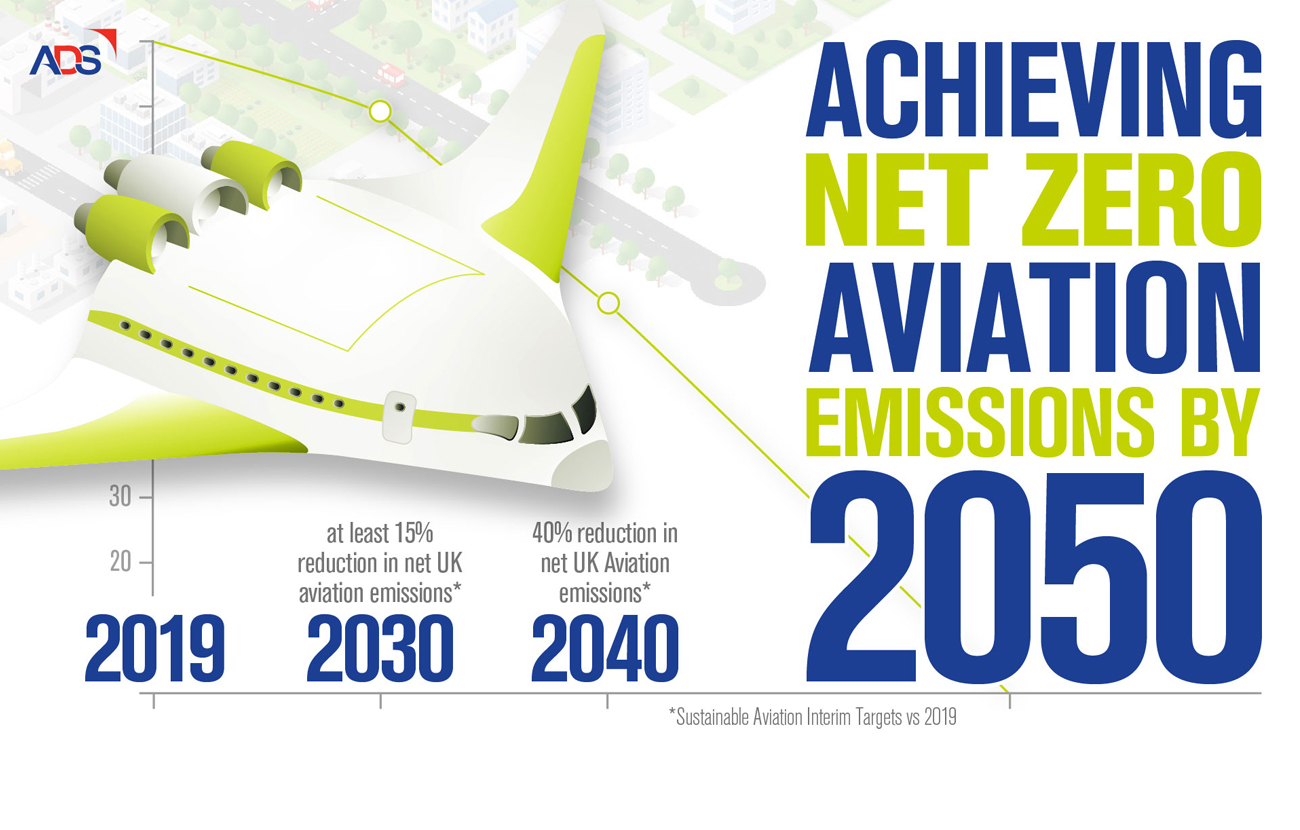Aviation drives global economic growth and is vital in the movement of goods and connecting people to parts of the world to experience different cultures.
The UK aerospace industry recognises its responsibility to reduce the impact of aviation on the climate and has committed to achieve NET Zero CO2 emissions by 2050 with an ever-increasing need to focus on improving aircraft technologies to achieve this.
The aircraft interiors sector is also playing their part. Here are three ways in which our digital cabin exhibitors are responding to the sustainable aerospace challenge:
- Airtek, a collaboration between Williams Advanced Engineering, JPA Design and SWS Certification Services won the sustainability category at the Future Travel Experience Transformation Honours List in 2021 for its lightweight aviation seat. The unique patented all composite monocoque structure has less need for much of the traditional metallic under seat support structure thus reducing seat weight, aircraft fuel burn and associated carbon emissions for tomorrow’s commercial aircraft. In addition, the use of high percentages of recyclable materials that are reusable by other industries minimises future environmental waste and pollution.
- Cecence, an award-winning composite solutions development and manufacturing company, is developing lightweight aero interiors using recycled carbon, natural fibres and bio-based resin systems.Composite materials provide weight savings and durability without compromising on strength but often rely on materials which use a huge amount of energy in their production. Natural fibres such as hemp sequester CO2 in their growth and when combined with a bio-resin Cecence are able to produce net zero products that make a positive contribution from the very beginning of the product’s life.Cecence’s latest sustainable seat back provides a GWP reduction of 84% on more traditional composite materials.
- STG Aerospace, who specialise in emergency exit and cabin lighting systems, has embraced the need for sustainability throughout the business. Their lighting products provide either no power or low power lighting. Their emergency exit systems (saf-Tglo®) are self-charging, requiring no power while their cabin lighting systems are designed for low power.And, STG fully embrace the need to prioritise social value with the same rigor as economic value, by further embedding their ESG (Environmental, Social and Governance) framework throughout their business.

The Sustainability Challenge
Aviation and aerospace are taking the sustainability challenge seriously, as was made clear at an ADS pre-COP26 event where the Chief Technology Officers of seven leading aerospace manufacturers reaffirmed their commitment to achieving more sustainable aviation. It was also evident during COP26.
The aerospace industry is not just talking but doing.
The road to net zero is not an easy overnight accomplishment, but through working together and positive commitments on innovation, finance and investment, sustainable aviation can be within reach.



